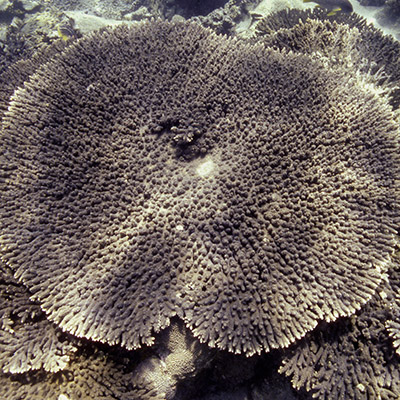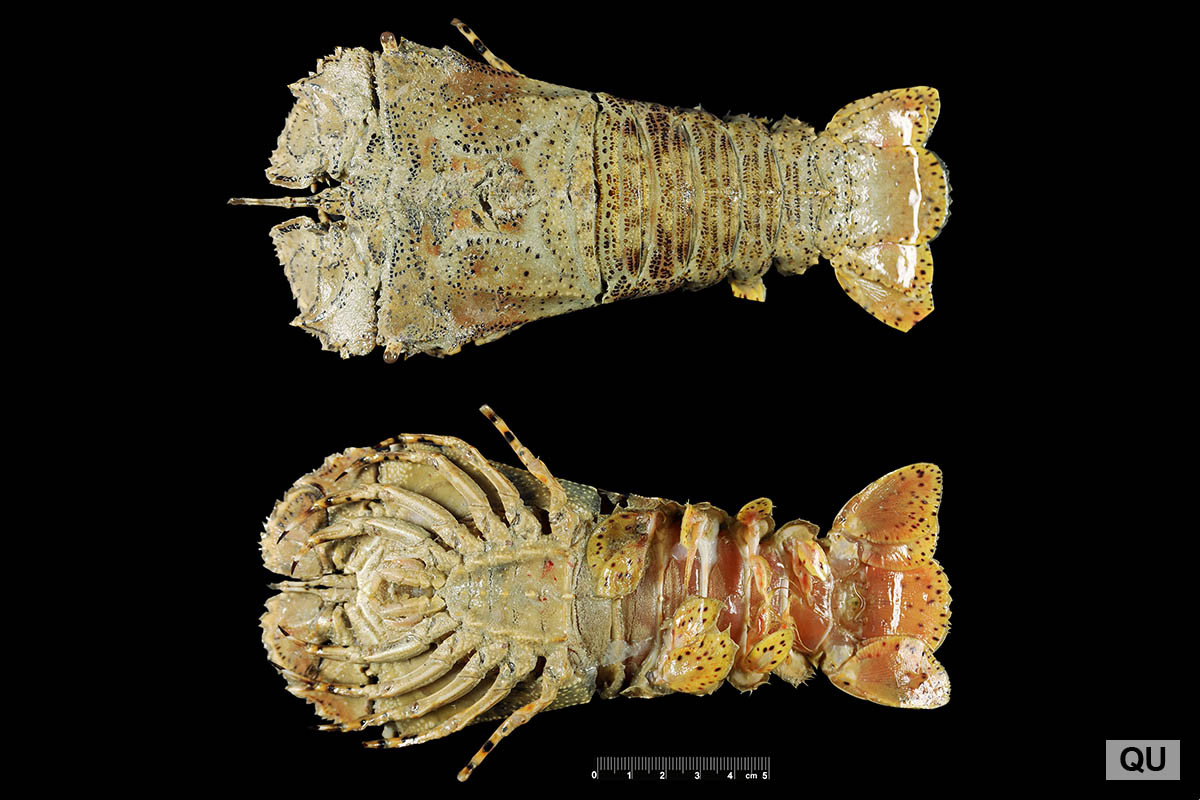الاسم: Thenus orientalis
الاسم المحلي: أم الربيان (بالإنجليزية: الربيان مسطح الرأس).
الاسم الشائع:
الاسم العلمي: Thenus orientalis
التصنيف: الصف: القشريات لينة الهيكل. الرتبة: عشرية الأرجل. العائلة: الربيان الشبشبي، (Scyllaridae).
القياس: يبلغ طول عينات هذا النوع 16 سنتيمتراً عادة في حين يبلغ أقصى طول لها 25 سنتيمتراً ويكون طول الدرقة ثمانية سنتميترات كما يمكن أن يبلغ الوزن أكثر من نصف كيلوغرام.
موطن:
تعيش الربيانات مسطحة الرأس في القيعان الطينية أو الرملية الناعمة، والتي تكون في بعض الأحيان مختلطة بالأصداف أو الحصباء على أعماق تتراوح بين 10 إلى 60 متراً (وفي ظروف إستثنائية إلى عمق 100 متراً أو أكثر). تدفن أنفسها في القاع الناعم خلال فترات النهار وتشاهد فقط أعينها وقرون الإستشعار الخاصة بها، وتسبح بنشاط قاطعة مسافات كبيرة خلال فترات الليل باحثة عن الغذاء. تبقى المرحلة اليرقية الهائمة لمدة ثلاثة أشهر.
التوزيع:
ينتشر هذا النوع بشكل كبير في المحيط الهندي وغرب المحيط الهادئ ويتواجد من شرق سواحل أفريقيا (جنوب البحر الأحمر إلى نتال) والخليج العربي وصولاً إلى الصين شرقاً وجنوب اليابان والفلبين وأندونيسيا والمناطق الإستوائية في أستراليا (غرب أستراليا إلى كوينزلاند). من الأنواع الشائعة في مدى توزعه ولكنه غير وافر بدرجة كبيرة. يتواجد هذا النوع في الخليج العربي مع نوع من القشريات (Octolasmis warwicki) حيث تتعلق بأقدامها.
حالة حفظ النوع:
أدرج الربيان مسطح الرأس ضمن القائمة الحمراء للإتحاد الدولي لصون الطبيعة تحت بند الأقل تهديداً في تقييمه العالمي. يتم صيد هذا النوع خاصةً في مناطق توزعه ويكون في العادة صيد عرضي في الشباك الجارفة للقريدس، مع أنه لا يوجد هناك تجارة أسماك متخصصة لهذا النوع. وبما أن هذا النوع يؤكل فقد تم توثيق حالات بأنه يصطاد من قبل الغطاسين.
الشرح:
الجسم منضغط بشكل كبير وسطحه المغطى بشعيرات قصيرة مغطى أيضاً بحبيبات صغيرة. الدرقة مسطحة ومعينية الشكل، عريضة من الأمام وضيقة جداً من الخلف، وحوافها الجانبية مستقيمة وتمتلك في مقدمتها زوج من الأسنان فقط ولا يوجد لديها أسنان في ثلاث أرباع الجسم الخلفي. العيون صغيرة ومتوضعة على الزاوية الخارجية للدرقة وهي محمية بأسنان حادة تقع خلف محجر العين. قرون الإستشعار عريضة ومسطحة تشبه الصفيحة ولها ثلاث حواف مسننة. يوجد على المنطقة البطنية أخاديد مستعرضة تمر عبر منتصف كل قطعة ويوجد أيضاً أخدود وسطي بسيط ينتهي بشوكة حادة على القطعة الخامسة. لون الجسم أصفر بني باهت بحيث يكون لون الحبيبات حمراء بنية غامقة وأطراف الأسنان أبيض، لون الأرجل أبيض مُصفر، وبني من الناحية الطرفية. تنتهي مروحة الذيل بمسحة صفراء.








